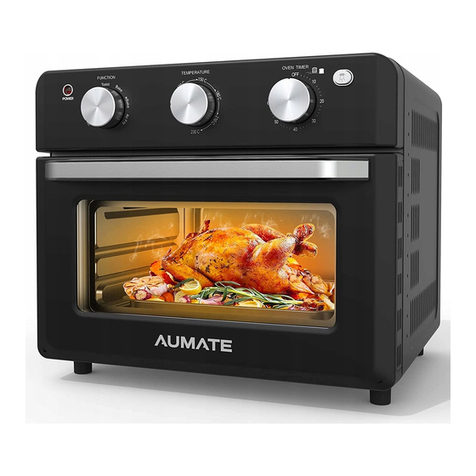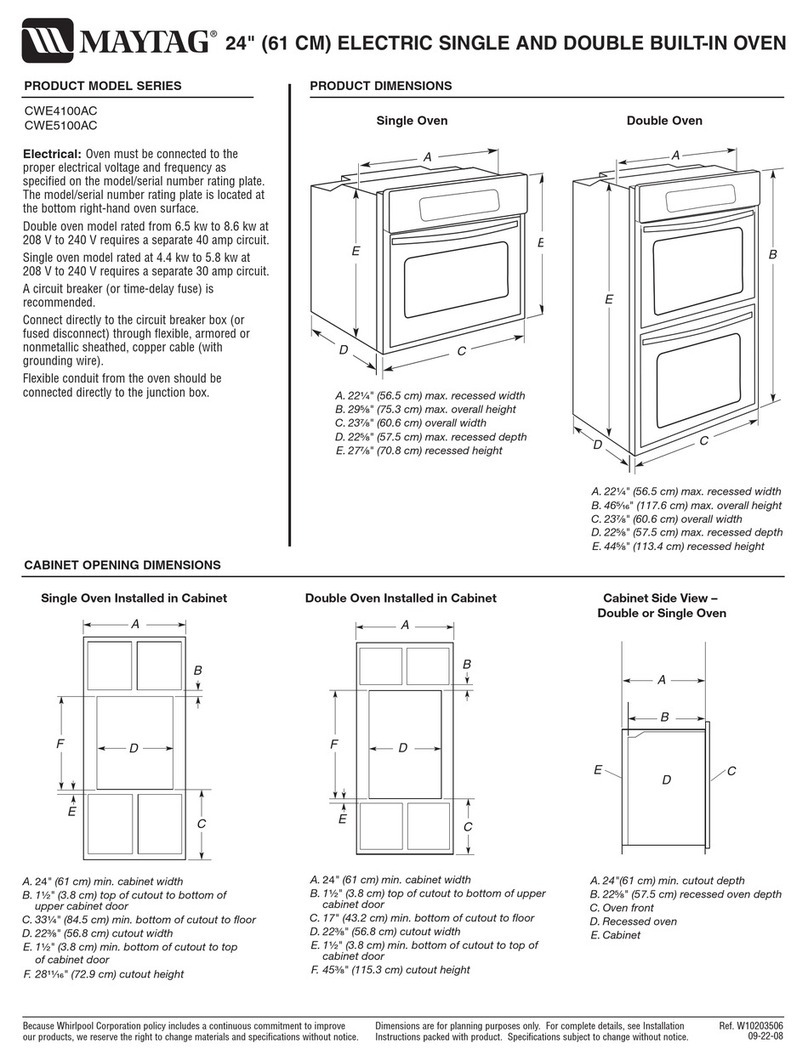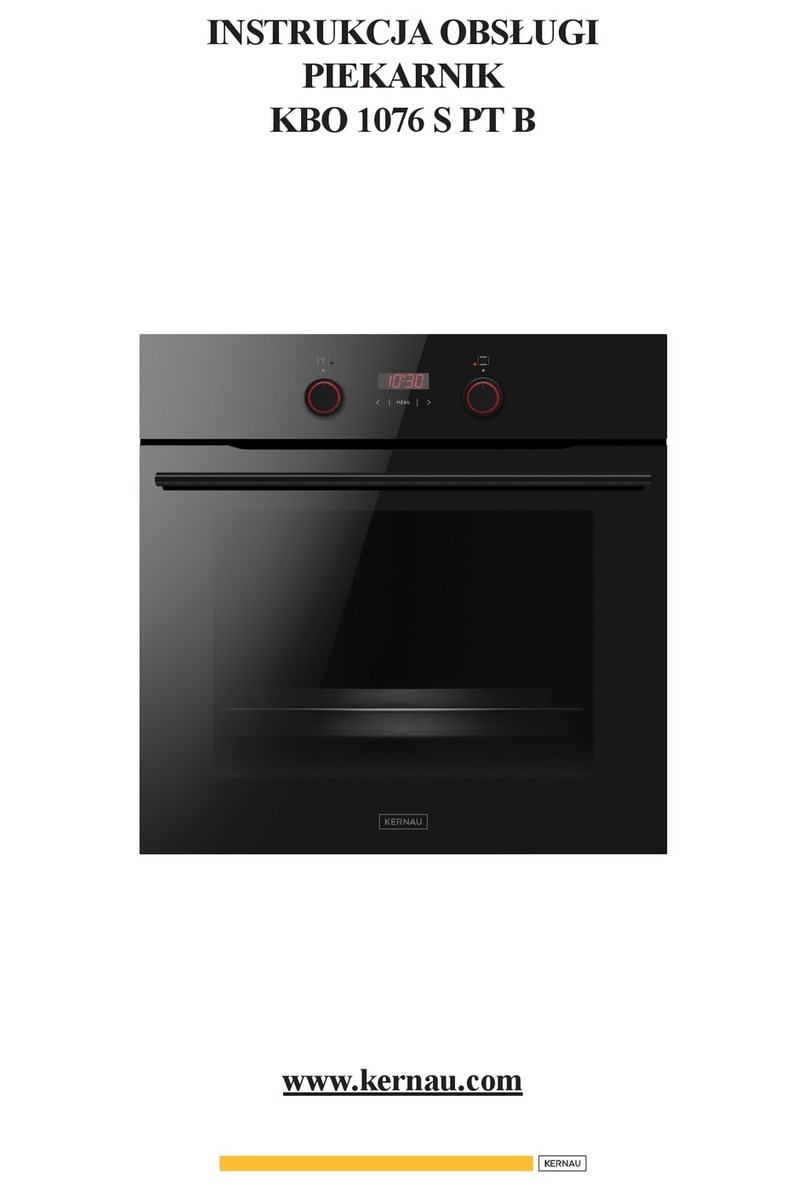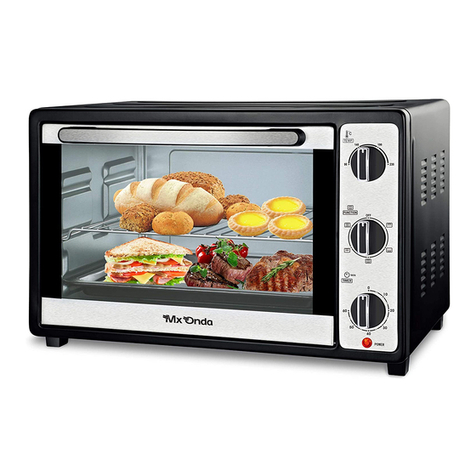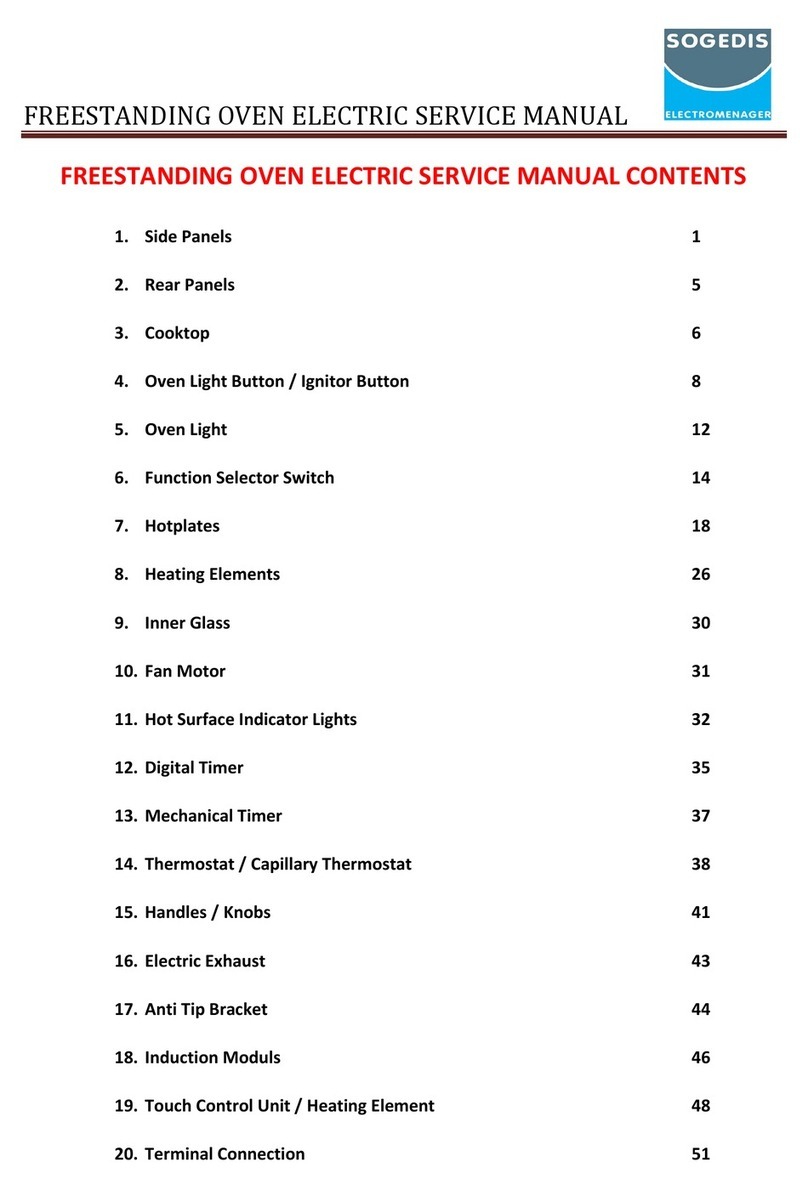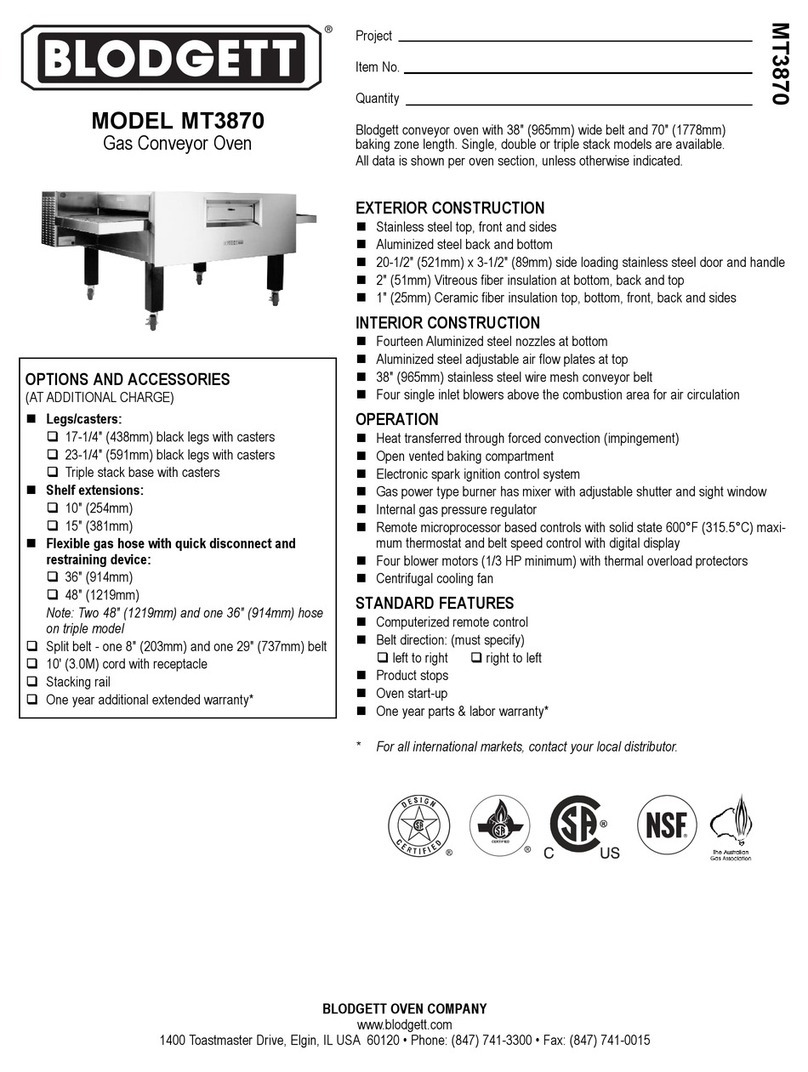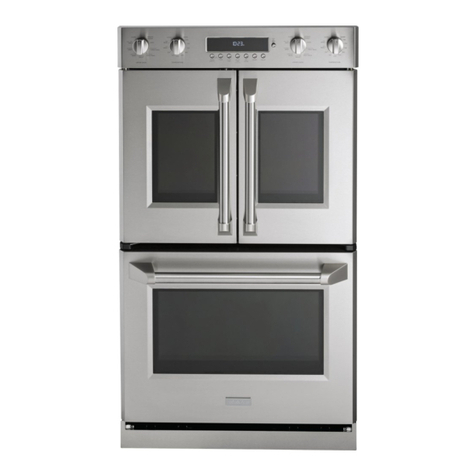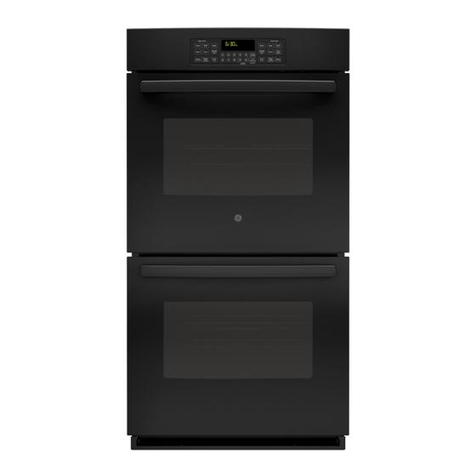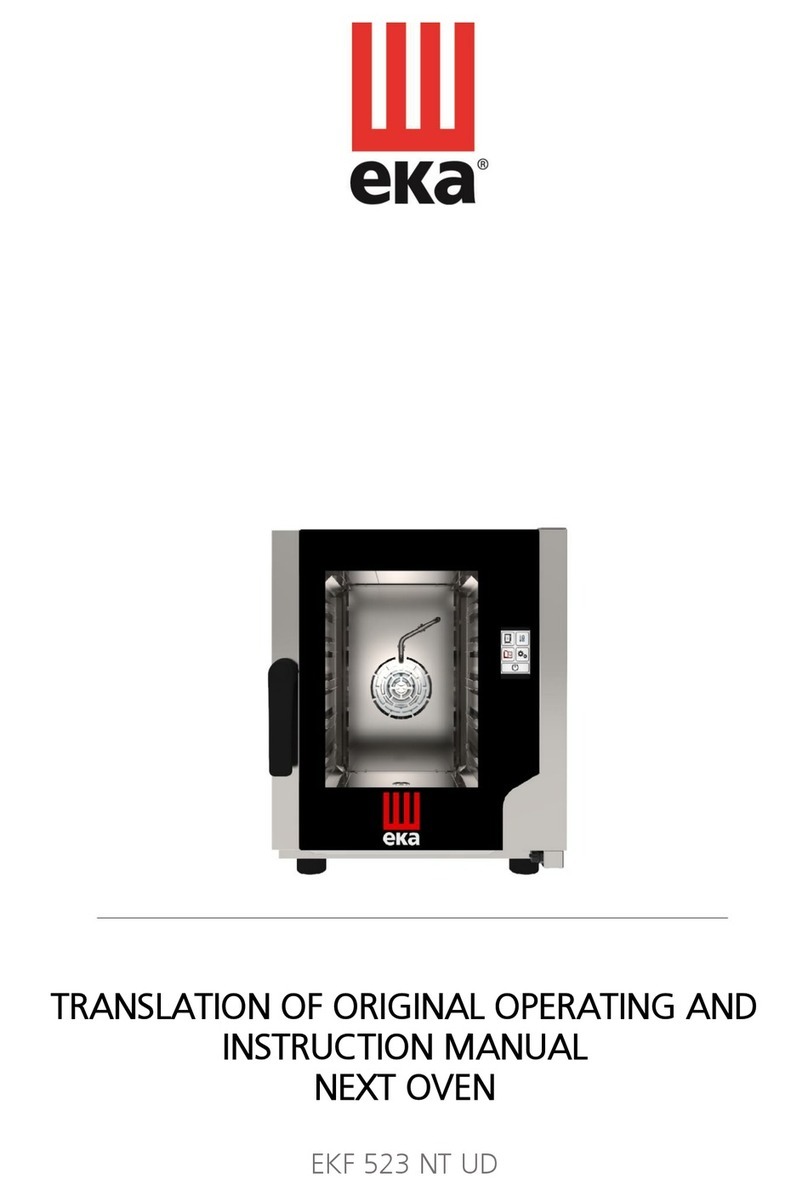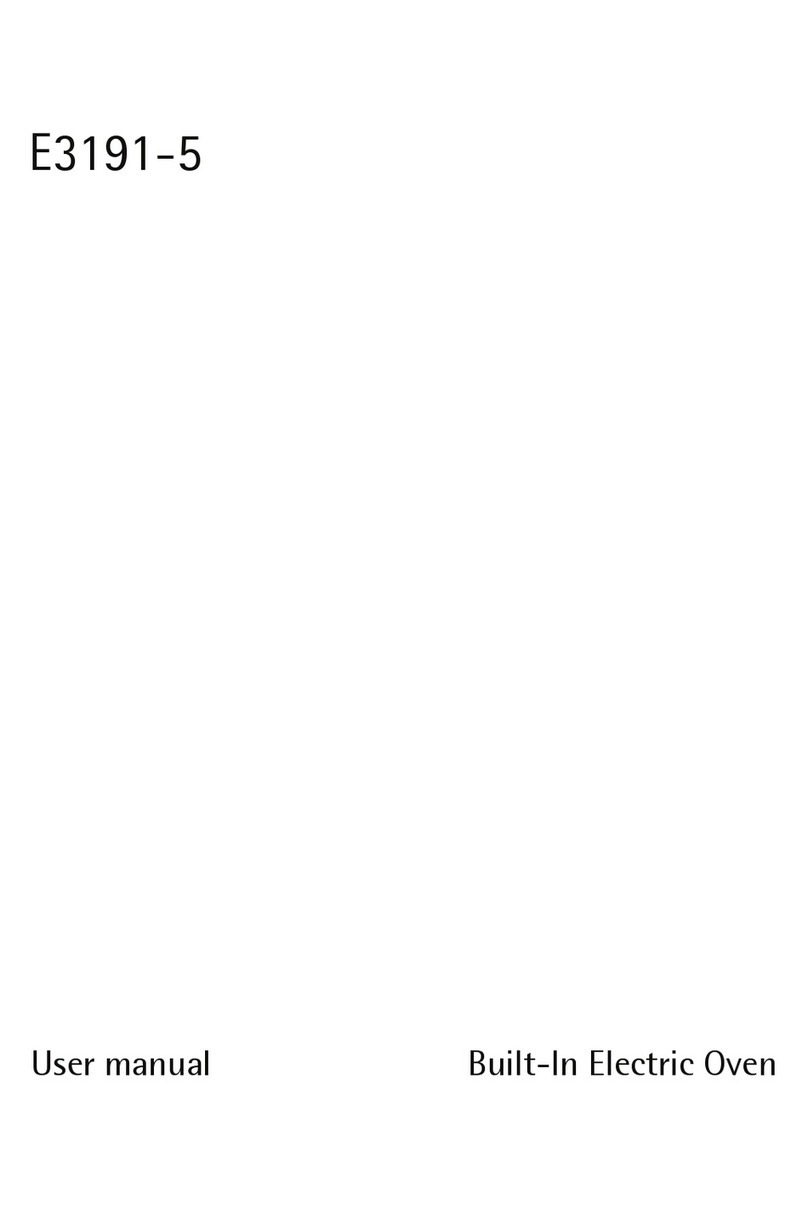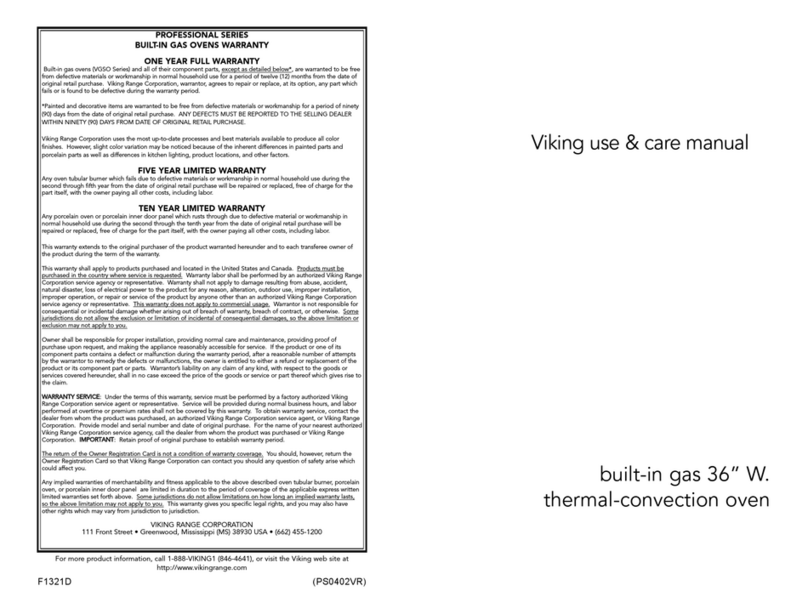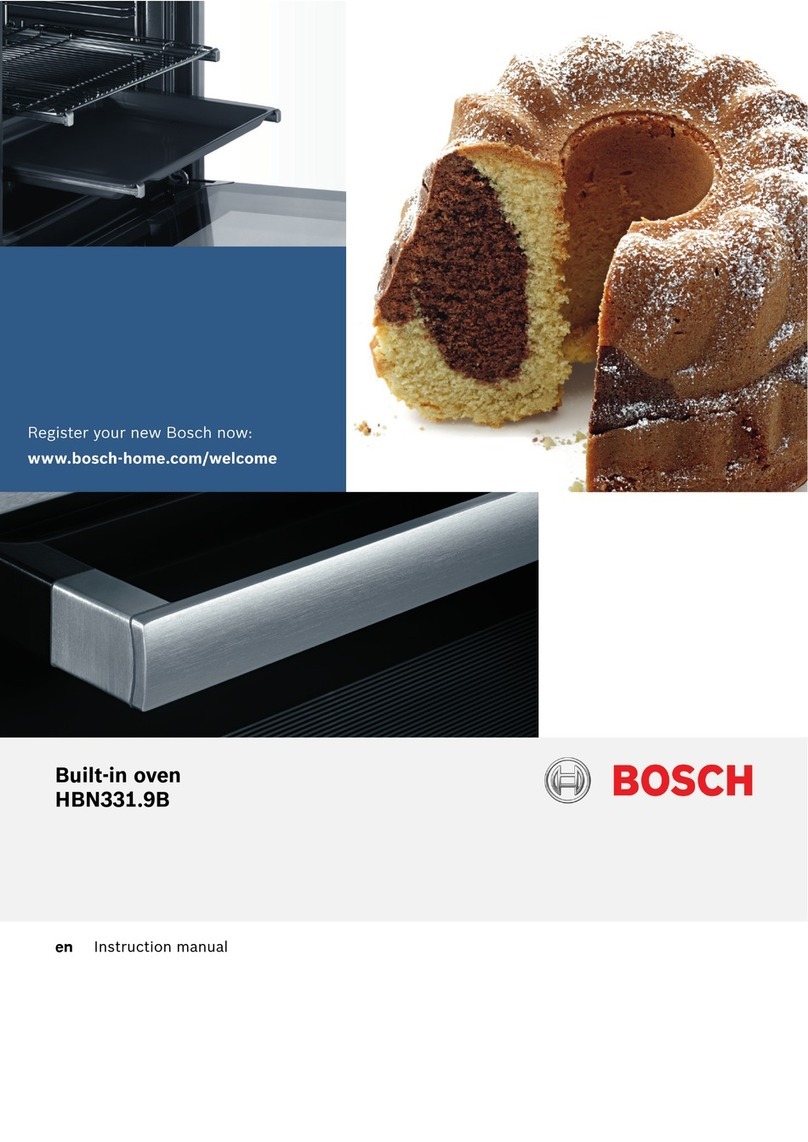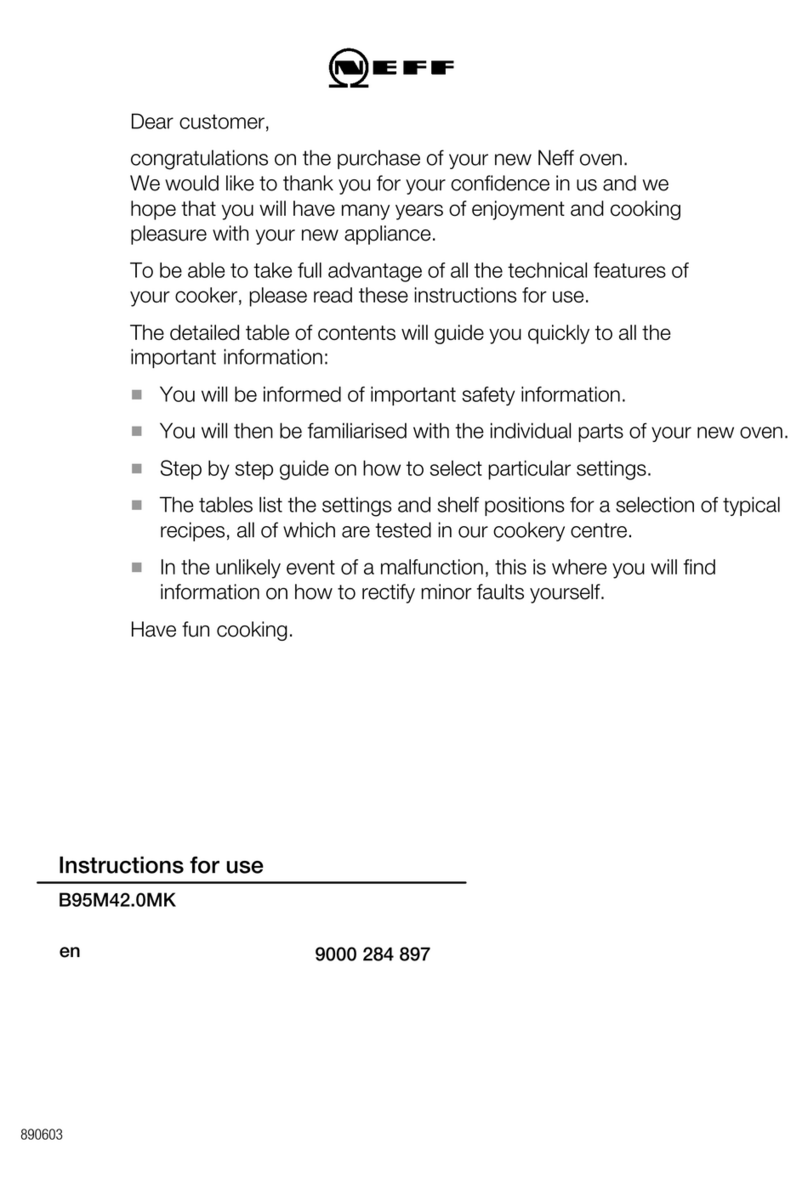
UK/4
- Wait for the temperature to cool to ambient levels before switching
the oven on again. If there is a great deal of steam inside the
chamber, open the door for a few minutes to let out the steam and
then close it again.
This procedure serves to remove any moisture built up inside the oven
during the production, storage and shipping stages.
NOTE: It is possible for the appliance to give off unpleasant
odours during the operations mentioned above. Ventilate the area.
WARNING! Do not open the oven door for long periods,
especially at high temperatures; this is to prevent the hazards of
burns and overheating of parts close to the door.
WARNING! Only use the oven for baking for the first time after
carrying out the above procedures, which are absolutely essential
for perfect operation.
WARNING! Never bake any items the first time that the
equipment is switched on or when it is switched on after a long
period of disuse.
NOTE: When switching on the oven again, to increase the
duration of the component parts (refractory surfaces), it is
necessary to prevent heating too suddenly. Each time, before
reaching the set point for cooking, keep the oven at a temperature
between 120°C (250°F) and 160°C (320°F) for at least 40 minutes.
3.2.2 STARTING UP THE BAKING CHAMBER WITHOUT
THE STEAMER: MANUAL MODE
b) Set the required cooking temperature using the buttons provided
(fig.17 item 3). The value will be shown on the right hand
luminous display (fig.17 item 4).
c) Set the power values of the ceiling (fig.17 item 5) and of the floor
(fig.17 item 7). These values vary from 0 (power disconnected) up
to 9 (maximum power) and appear on luminous displays (fig.17
item 6) and (fig.17 item 8), respectively.
A red dot in the lower right hand corner of the display (fig.17 item
6) and (fig.17 item 8) indicates that the heating elements in the
ceiling and floor are in use.
The luminous dot turns on and off to indicate when power is and is
not being absorbed by the heating elements.
Separate adjustment of the ceiling and floor temperatures makes
use of the oven much more elastic, allowing for more customised
baking.
d) Switch on the baking chamber by pushing the push-button (fig.17
item 9): a red LED will light up in the top right hand corner.
e) When the temperature inside the baking chamber (fig.17 item 12)
reaches the set temperature (4), the power supply will cut out and
the indicator led (fig.17 item 6 and fig.17 item 8) will turn off.
When the temperature inside the baking chamber drops below the
set value (fig.17 item 12), the power supply will automatically cut
in again and the LED will light up once more.
f) The oven control system is equipped with an economy function,
which can be switched on either automatically or manually.
f.1) Automatic enabling of the economy function
When the sum of the values set for the ceiling (fig.17 item 6) and the
floor (fig.17 item 8) is equal to or less than 9, the economy function is
enabled automatically and a red LED in the top right hand corner of the
button lights up (fig.17 item 10).
This means that the heating elements in the ceiling and floor are never
fed simultaneously, and therefore the oven uses approximately half the
amount of power.
f.2) Manual enabling of the economy function
When the sum of the values set for the ceiling (fig.17 item 6) and the
floor (fig.17 item 8) is higher than 9, the heating elements are fed
according to the set values.
In this case it is possible to enable the economy function manually by
pushing the Economy push-button (fig.17 item 10).
The red LED in the top right hand corner of the button will start to
flash and the values set for the ceiling (fig. 17 item 6) and the floor (fig.
17 item 8) will be reduced proportionally to the values set until they
add up to a value equal to or less than 9. The oven will thus operate
using approximately half the amount of power. The economy function
is disabled merely by pressing the Economy button (fig. 17 item 10)
again: the red LED will go out and the values originally set for the
ceiling (fig. 17 item 6) and the floor (fig. 17 item 8) will be restored.
If the economy function has already been enabled manually (the red
LED on button 10 is flashing) and adjustments are made to the ceiling
(fig. 17 item 5) and floor (fig. 17 item 7) regulator buttons, the
economy function will once again adjust the values automatically until
the sum is once again equal to or less than 9.
When the manual economy function is disabled, the values displayed
will be the ones set during the last adjustment.
Manual enabling of the economy function is extremely useful during
periods of little work or pause, when maximum power is not required
but the oven needs to be kept at a certain temperature so as to be ready
to return quickly to normal work.
NOTE: The “Economy” function is switched off when passing from
“Manual” to “Program” and vice versa; it is also switched off when
passing from one program to another and/or when “saving” a
program.
When baking, if passing to the program display or to editing the
program being used, the Economy function is momentarily
disabled and then re-enabled automatically when the program
returns to viewing the temperature of the oven.
g) The temperature (fig. 17 item 4) inside the baking chamber can be
set to a maximum of 450°C (845°F). Should this maximum
temperature be exceeded at any time due to a fault, the safety
thermostat (fig. 17 item 2) will trigger, stopping operation of the
oven and turning it off.
All the indicator lights on the lower control panel will start to flash,
signalling an alarm. Wait until the oven cools down.
Unscrew the safety thermostat cap (item 2 –fig. 17), insert a
screwdriver or thin rod into the hole and press. The button located
inside will reset the thermostat, the bottom LEDS will stop flashing and
the oven will start up again normally.
Replace the protective cap (item 2 –fig. 17) over the safety thermostat
to prevent this instrument from deteriorating and preventing the oven
from operating properly.
WARNING! If this operation is carried out without waiting for the
oven to cool down, the manual safety thermostat will not allow the
oven to be reset.
If the problem continues to arise, please call the technical service
department.
h) The “light” button (fig.17 item 11) is used to switch the lighting
inside the baking chamber on and off.
i) To turn the oven off, simply turn off the main switch (fig. 17 item
1).
When the oven is turned on again the control panel will be in the same
state as when it was last turned off.
3.2.3 STARTING UP THE BAKING CHAMBER WITHOUT
THE STEAMER: PROGRAMS MODE
It is possible to store 20 different baking programs from the
control panel; for each program, it is possible to enter a Set Point
temperature, a ceiling power level, a floor temperature and the
baking Timer. Once a general program has been stored, when this
is recalled, you will automatically find the previously set baking
settings
STORING A PROGRAM
1) Press the “P” button (fig.17 item 14). The display on the left will
show the number of the last program used; the displays on the
right will show the set point temperature and the ceiling and floor
temperatures set for this program (pressing the “P” button again
will pass on to the next program, and so on, until you have
scrolled through all 20 programs in the memory).
2) Once positioned on the required program no. (no. 5, for example),
follow the procedure in points 3.2a and 3.2c to change the
temperature setting and the power levels for the “ceiling” and
“floor”
3) Hold down the “P” button (fig. 17 item 14) for at least 2 seconds
and until the buzzer makes a brief sound; this will store the new
program in the memory.
4) It is also possible to associate the “baking Timer” to a program; to
set the timer, press the Timer button (fig. 17 item 15) and the
display on the left will read “OFF” while the right-hand display
will show the baking time in: MINUTES “comma” SECONDS.
This time can be changed using the buttons under the display (up
and down arrows). Pressing the "Timer" button for a second time,
it is possible to set the start time; pressing the "Timer" button for
a third time will return to the required program.
5) Hold down the “P” button (fig. 17 item 14) for at least 2 seconds,
until a BEEP sound is heard; this will store the new program,
baking timer included, in the memory.
NOTE: When a general program is started, if a “Baking time” is
associated to this program, to start the timer, proceed as for the
“Manual” mode described in point 3.6.4.
USING A PROGRAM
1) Press the “P” button (fig. 17 item 14) several times until the
required baking program is displayed.
2) Connect the power to the chamber using the “Start/Stop” button
(fig.17 part.9): the red LED in the top right hand corner of the
button will switch on.

